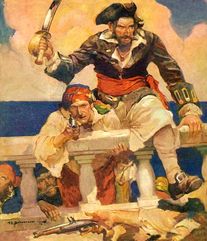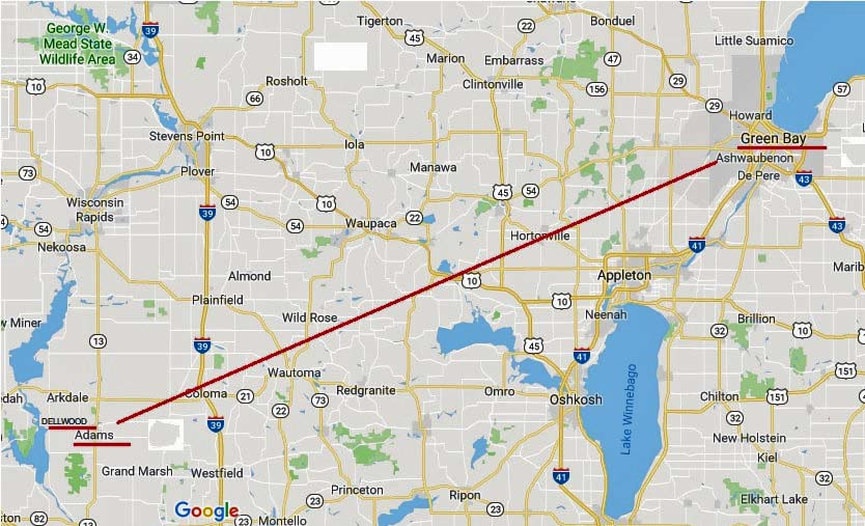
What? Piracy in Packerland? Imagine swords flashing in the northern sun, cannon balls ripping the air and hurtling toward Lambeau Field, not to mention other unthinkable events. Piracy might explain the mysterious disappearance in Green Bay of a beautiful Chinese junk, created and built in Hong Kong by famed author/adventurer Richard Halliburton. Well, I might be gilding the Lily a bit by speaking of the real ship itself being kidnapped, but the vessel in question did exist as a model which mysteriously disappeared from the famed Neville Museum in Green Bay under puzzling circumstances.

Here’s how the mystery unfolded for me around 1995 while I was gathering material for my Halliburton biography, “A Shooting Star Meets the Well of Death, Why and How Richard Halliburton Conquered the World.”
An undated news clipping I came across quoting Dick Horning, writer for the St. Paul Dispatch, is what whipped up my thirst for charging into this mystery,
An undated news clipping I came across quoting Dick Horning, writer for the St. Paul Dispatch, is what whipped up my thirst for charging into this mystery,
“In 1942, James Keller, a civilian employee of the army, paid $2,500 for the model of the Halliburton vessel (Sea Dragon, author’s note) in Panama.
A year or so later, because Keller was traveling extensively, he took the model to the Neville Museum in Green Bay, Wis., and obtained a receipt for it.
Keller now is working in Minnesota and has a weekend retreat near Green Bay. A few weeks ago, he went to the museum, presented his receipt and asked for his property.
But museum officials (who were new in the 20-odd years since Keller first visited there) cannot find his model.
Horning said that the museum admits Keller’s receipt is valid, but none of them ever had seen or even heard of the model.”
A year or so later, because Keller was traveling extensively, he took the model to the Neville Museum in Green Bay, Wis., and obtained a receipt for it.
Keller now is working in Minnesota and has a weekend retreat near Green Bay. A few weeks ago, he went to the museum, presented his receipt and asked for his property.
But museum officials (who were new in the 20-odd years since Keller first visited there) cannot find his model.
Horning said that the museum admits Keller’s receipt is valid, but none of them ever had seen or even heard of the model.”

I was fascinated by Horning’s article. Over a period of time, I queried several of the museum’s then current and former officials in 1995, but, surprisingly, none had any knowledge of the mystery or the model itself. I had also sent inquiries to Laguna Beach, Boca Raton, and St. Paul but garnered the same results. Disappointed, I thought I had reached a dead end. Further digging, however, turned up the exciting information that Keller’s request for the return of the model was made in 1969 and that the request had been sent from the Village of Friendship, Wisconsin, about 100 miles from Green Bay. Finally, I had a solid lead and a definite location to search for the mysterious mister Keller that might lead to further news of the missing model. Even if Keller had already passed away his obituary might yield further information to be mined.
I sent a letter to the Adams County Times & Friendship Reporter in March of 1995 and was surprised, pleased, and excited when the letter was soon printed in that publication. It quickly produced six responses with detailed news about Keller and his wife, including his obituary.

Now the shadowy Mr. Keller was beginning to be fleshed out as a real person. According to the details provided in the letters, James E. Keller was a retired Civil Engineer for the US Army Corps of Engineers and frequently checked out radar sites in the states. He and his wife Jean had lived in Dellwood, an unincorporated community near Adams on Castle Rock Lake. They were well-liked and knew many people. He had been quite active in local organizations and friendly with neighbors. One writer had visited Keller’s home and said it was “very interesting, filled with many collectibles but she said she did not recall seeing the Sea Dragon model. Another said Keller was always involved in outlandish things and seemed very intelligent. He once gave the man a 120-mph ride in a souped-up Cord car. He thought Keller was the kind of person who was likely to own such a model as the Sea Dragon.
Richard Halliburton and his crew of 14 vanished without a trace in a monumental Pacific Ocean storm toward the end of March, 1939, while attempting to sail the Sea Dragon from Hong Kong to the San Francisco Exposition.


 RSS Feed
RSS Feed